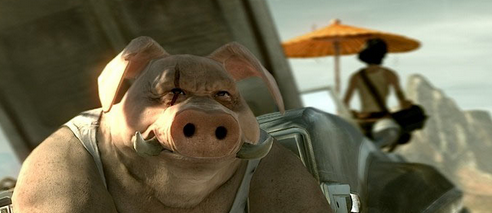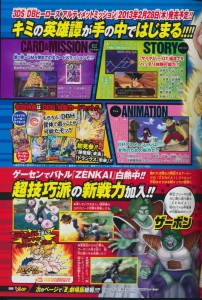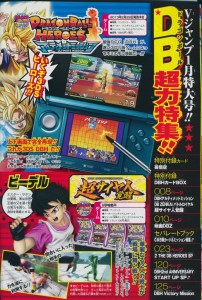I can’t confirm or deny this since I already updated mine, but the following comes from a reddit post by user hlazlo:
“Just a heads up for people who want to play their new console immediately and still update it.
Last night, I set mine up and hit “cancel” at the first mention of the update. We played Nintendoland for a while and then I went to update it. To my surprise, it skipped downloading and simply started installing it. It took less than 15 minutes.”
Others in the comments went on to confirm this, and I can confirm that the Wii U will download other, game-specific updates in the background. If you’re worried about the hour-long update taking a while, you may be able to let out a sigh of relief yet!

David Yarnton has finally been replaced (nooooo!) and Nintendo of Europe has a new general manager: Simon Kemp. Kemp does not come from a background of gaming companies, but instead worked in television and business marketing departments. Even still, he has the “Nintendo is the best” chit chat style down already:
“I’m extremely excited to be joining Nintendo UK at such a pivotal moment. With the launch of Wii U Nintendo is once again changing the way everyone will play games at home, it’s a fantastic time to be here. Nintendo UK also has an extremely talented team in place already and I am very much looking forward to leading & working with each and every one of them.” – Nintendo of Europe general manager Simon Kemp
I wonder how soon after they’re hired Nintendo teaches their employees the “changing the way everyone will play games” line…
On Wii, there were several different ways you could change the color of a Mii’s pants. Favoriting a Mii gave it red pants, sending it to another Wii gave it blue, and not doing anything at all gave them grey pants. Slightly confusing, but mostly pretty straightforward! Here’s how the pants color system works on Wii U:
Red Pants
– Your user Mii wears red pants/gold crown icon
– Other users’ Miis wear red pants/bronze crown icon
– Regular favorited Miis wear red pants/red crown iconGray Pants
– All Mii characters initially wear red pants
Blue Pants
– Like on Wii, if you receive a Mii from another system it wears blue pants
Yellow Pants
– Special Miis (distributed by Nintendo) wear yellow pants
Sure is a “Nintendo-y” way of doing pants colors!
Developers certainly know a thing or two more about systems than we do, so when an anonymous source goes to Eurogamer and says that it’s tough to develop for Nintendo’s latest home system, there might be a bit of a problem! No word on who the dev is, but they said that the ‘toolchain’ (the system of tools for developing) on Wii U was fighting them “every step of the way”.
Again, this is an anonymous source who’s working on that ‘key AAA franchise’ we’ve talked about in the past, but it’s unclear if more developers are hitting similar walls. So far we haven’t heard much!

“You’re right when you say that both the Wii U and Beyond Good And Evil fit very well, but for now I am only focused on Rayman Legends. That’s [also] why I believe in an incredible Zelda game, the GamePad and classic control fit very well with such action-adventure games.” – Ubisoft’s Michel Ancel
This isn’t confirmation at all, but I’m glad to hear it! Also, it sounds like the response was somewhat prompted by the reviewer in order to get him to mention BG&E with Wii U. This doesn’t mean it’s just a passing phrase, but it also doesn’t lend a lot to the certainty that the game will make it to Nintendo’s new console! Fingers crossed anyhow.
Walmart is selling Kirby’s Epic Yarn for an incredible price. The Wii game is available for just $8.40 at the moment.
You’ll have to pay tax and possibly shipping (if you don’t choose in-store pickup), but it’s still a great offer.

